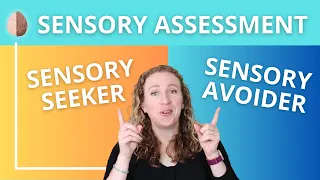In this post we’ll talk about how PTSD and trauma change your memories and three things you can do to soften or treat traumatic memories and their painful symptoms.
When you have a traumatic experience, your brain physically changes in structure and electrical activity. And one of the big symptoms that we see with trauma and PTSD is changes in memory. There are four ways that traumatic memories differ from regular memories.
1. Traumatic Memories Don’t Change Over Time
Now, normal memories change over time. Every time you retrieve them, retell them, and store them, they change. So that’s one reason why two people might experience the exact same event and remember it very differently.
Every time a non-traumatic memory gets retrieved or remembered, they change just a little bit when they’re stored. So in that way they can soften over time and we’re able to create new meaning around them.
So for example, I can remember a perceived slight I had as a teenager. I got cut from the soccer team, and it was super painful back then. So as a teenager this felt like the end of the world. It was the most unfair, unjust, horrible thing that had ever happened to me.
But now when I remember it, it really doesn’t hurt so much, and I can see how from the coach’s perspective, they weren’t trying to be mean to me; they just were trying to do what was best for the team. So the intensity of this memory has changed over time, and now it doesn’t hurt so much.
But this isn’t the case with traumatic memories. This is the first way that PTSD memories differ from regular memories.
In the book The Body Keeps the Score, Dr. Bessel van der Kolk shares a study of veterans from World War II. Researchers interviewed these veterans every couple of years for 45 years, and they asked them about their experiences with the war.
They found that for the veterans who did not develop PTSD, their accounts and their memories, they changed over time. The events had lost the sharp edges of fear and intensity of painful emotions.
But for the men who did develop PTSD, their experience was different. They may not remember all of the details, but the things that they did remember remained sharp and consistent for over 45 years after the war ended. Their traumatic memories were much more vivid than regular memories, and their accounts did not change over the decades.
When traumatic memories are retrieved, the physical stress response actually serves to strengthen them, to reinforce the memory in the circuits of the brain. The PTSD response makes these memories stronger and stronger over time.
And I personally believe our brain is not out to get us. I believe that our brain does things for a reason. And if you think about something really terrible that happens and you have this huge emotional reaction to it, your body and your brain want to help you avoid having that happen again. So it might have a built-in response that makes these memories so strong that you’ll never forget them to help keep you safe and avoid those situations again.
2. Traumatic Memories Come With Vivid Sensations
Let’s talk about the second way that trauma changes memories. So these veterans who were getting interviewed for 45 years described these memories as feeling like yesterday, and they said that these memories trigger the physical sensations of the actual event. And so that’s the second way that PTSD memories differ: traumatic memories come with very vivid sensations.
People report actually smelling during a memory or actually feeling the sensation of a memory. These are sometimes called flashbacks.
Now, studies show that for non-traumatized memories, like for example, the birth of a child, people don’t have such vivid memories. They don’t remember every little detail in full clarity, like how someone’s face looked or the smell of a room. But with traumatic memories there’s the physical re-experiencing.
One example that Dr. van der Kolk gave was of a woman who was assaulted by someone who was drunk. And later if she went to parties, if she caught a whiff of alcohol, the flashbacks would return so powerfully that she felt like she was being assaulted again. So she basically stopped going anywhere.
3. Traumatic Memories Feel Like They’re Happening Now
The third way that traumatic memories differ is that the passage of time is distorted. The memory doesn’t feel like something in the past; it feels like something happening in the present moment, and the survivor re-enters the fight/flight/freeze mode.
Dr. van der Kolk shared an experiment he ran where they were able to scan the brains of participants who were reminded of a traumatic event. Blood pressure and heart rate went up, and the brain essentially entered a super emotional state. The regions that process fear got super activated, and the part of the brain that processes rationally, that says, “Oh, no, you’re safe now. That was in the past,” that part of the brain actually decreased activity and shut down.
So this is one of the reasons why it’s difficult to calm down and rationally think through trauma memories. When our system gets overwhelmed, the part of our brain that makes words, that tracks time and integrates sensations, it shuts down.
4. Traumatic Memories Are Not Cohesive
This leads to the fourth way that traumatic memories differ. Because the emotional brain takes over, traumatic memories often get stored as fragments of emotions and sensations, as blips of images and sounds, but not a cohesive story. When someone has PTSD, their memories often have large gaps.
So regular memories are cohesive, right? They have a beginning and a middle and an end. But traumatic memories are often disorganized. So for example, someone who survived a car crash, they might remember every detail of someone’s face, but they can’t remember who first helped them or how they got to the hospital.
Other memories could be fragmented, missing, or blocked. Studies show that between 19 and 38% of people who were sexually abused as children experience memory loss.
In another study highlighted in the book The Body Keeps the Score, researchers interviewed girls between the ages of 10 and 12 and documented their abuse. And then 17 years later they interviewed the girls again, and 38% of them did not recall the abuse that was documented in their medical records. Some reported that they forgot that they had been abused and then remembered later.
Now, memory loss could be protective. Your brain might be shielding you from memories that you don’t have the resources to handle yet. And in my opinion, when those memories come back, it may be your brain telling you that you’re ready to deal with this now. But repressed memories can lead to memory loss in other important areas or lead to being triggered without knowing why.
Van der Kolk gives the example of Marilyn, who was sexually abused by her father as a child, but she had no memory of it. When men touched her she would lash out, even in her sleep. And then she also developed autoimmune disorders.
So even when trauma is not clearly remembered, it still can have an impact on people’s lives. The brain is driven to fill in these gaps, to complete the story. So sometimes it reenacts the trauma over and over to process it, but when this is done without the right support and in an unsafe environment, this can be really unhealthy.
Van der Kolk tells the story of a woman who kept trying to take care of her mother who had died years before. He tells the story of a Vietnam veteran who every year on the anniversary of his war trauma would seem to dissociate and then attempt to rob a bank, pretending that his finger was a gun.
I worked with a lot of clients in residential treatment who had been sexually abused and were essentially reenacting that by engaging in these really risky sexual behaviors with unhealthy relationships.
When the traumatic response gets frozen in time, the brain seems driven to repeat those experiences, to complete the story, or to get resolution by repeating it over and over again.
Four Ways to Heal
Now, this takes us to the hopeful part of this post. The brain and body have natural, inherent drives toward healing, and with the right skills and support, PTSD symptoms can be treated and often resolved.
There are two types of memories, implicit memories and explicit memories. And there are at least four different treatment approaches that can help you work through these memories of trauma.
So in the next post we’ll talk about how you can create a safe environment so that you can process those memories, how eye movement can help you soften the sharp edges of memories, and how somatic treatment works through the memories that are stored in your body.
CBT is another great tool. It can help you change how you think about your traumatic experiences, and that can help you change how you feel. Basically, CBT helps you take a memory, retrieve it, re-label it, and restore it.
So make sure to check out the next post to learn what you can do with these traumatic memories to help soften them and heal.
Thank you so much for reading, and please take care.




